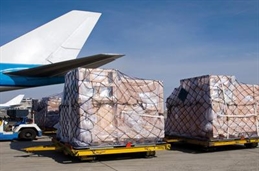
A wave of newly announced U.S. trade agreements is expected to bring greater market stability, according to a Freightos analysis, though the impact on freight flows is likely to remain limited for now.
Judah Levine, head of research at Freightos noted that from a freight perspective, this year's "tumultuous mix" of tariff announcements, pauses, and deadlines, has already disrupted typical seasonal demand and rate trends as many shippers rushed to frontload goods ahead of these deadlines or, for importers, to pause activity when duties were sky high.
"Though importers and exporters will not be happy about the tariff increases these deals entail for most goods on these lanes, they'll likely welcome the certainty and clarity that the agreements provide," Levine said.
"Those with inventories elevated from frontloading may not return to typical booking patterns until necessary. After that point, though, freight seasonality should return, with those higher tariff costs eventually felt by consumers."
The Freightos analysis stated that Transatlantic ocean freight volumes were about level with 2024 through April, though automotive tariffs that went into effect in April may have driven the 7% year-on-year drop that month. Tariffs on auto parts introduced in May could also explain why there did not seem to be much frontloading on the lane when reciprocal tariffs were paused from April through July.
Levine said this week's deal reduces automotive tariffs for EU exports by 10% and could spur some moderate rebound in volumes on this lane. The agreement’s 15% tariff level means most EU exports are facing a 5% increase in duties compared to levels since April, and so it is unlikely to spur any sharp near-term rebound.
For transpacific ocean freight, he noted that the US's reduction of tariffs on China from 145% to 30% in mid-May triggered an early and brief peak season surge. Asia - US West Coast rates hit a peak of US$6,000/FEU by mid-June but by mid-July had fallen back to April and early May levels of about US$2,300/FEU.
The Freightos head of research noted that prices have "remained unchanged" since as carriers have removed capacity to meet lower volume levels, making it unlikely carriers will implement planned August GRIs.
"Another 90-day extension of the 30% baseline tariff would run through the end of the typical peak season period," Levine said. "This development could spur some shippers who rushed to move goods in May and June or others who were waiting for more clarity to resume peak season bookings, which could push demand and rates up somewhat."
"But with the significant frontloading to date, the peak of peak season is still likely behind us."
Asia–North Europe container rates slipped 4% last week to $3,419 per FEU, Freightos reported, holding steady with early July levels but still up 45% from late May amid peak season demand and persistent congestion at several of Europe’s key hubs.
Freightos warned that continued volume strength and worsening delays as more peak season boxes arrive could justify general rate increases or PSSs of around $500 per FEU, which some carriers are planning for August.
"Even so, rates that have about leveled off to Europe, and Asia - Mediterranean prices that by last week had fallen 30% from a mid-June high to US$3,400/FEU – with rates for both lanes more than 55% lower than a year ago – suggest fleet growth and resulting overcapacity may already be impacting rate trends," Levine said.
Meanwhile, Freightos said air cargo volumes out of Japan or the EU to the US could see some bump from the lower tariffs on auto parts.
"Overall, though – as there wasn't much last minute front loading by air ahead of the deadlines and for most trades, tariffs are now higher than a week ago – the air cargo markets, like ocean freight, may not be shaken up much by the recent trade developments," Levine said.
Trade deals announced
The US has announced a series of last-minute deals with several of its major trade partners, including the EU and Japan.
The agreement with the European Union will feature a 15% baseline US tariff on most EU exports – up from the current 10%, but down from the recently threatened 30% level. This rate will apply to automotive exports from the EU as well, which, along with all global automotive exports to the US, have faced 25% duties on vehicles and parts since April and May, respectively.
The pact may also include a quota-based reduction in US steel and aluminum export tariffs for the EU, and the deal has the EU committing to zero or very low tariffs on most US exports.
The US-Japan deal similarly sets US tariffs at 15%, including for automotive exports, with Japanese commitments for investment in the US.
President Donald Trump has also said that the US has agreements with Vietnam at a 20% tariff rate and with Indonesia and the Philippines at 19%. Including the earlier deal with the UK, the US now has agreements or tentative deals with countries accounting for about 30% of the total 2024 US goods imports by value.
Meanwhile, the degree of progress on deals with the US's three largest trade partners – Canada, Mexico, and China, which make up another 41% of total goods imports – still varies.
Freightos noted that talks with Mexico and Canada – both facing August 1st 30% tariff threats – are ongoing. US and Chinese officials are meeting in Stockholm ahead of an August 12 tariff deadline, and talks are expected to result in an additional 90-day extension of the trade status quo following recent progress and deescalation of tensions.
US tariffs on China have been set at a 30% baseline since mid-May, with the effective rate much higher for many types of goods already facing the first Trump administration tariffs.



